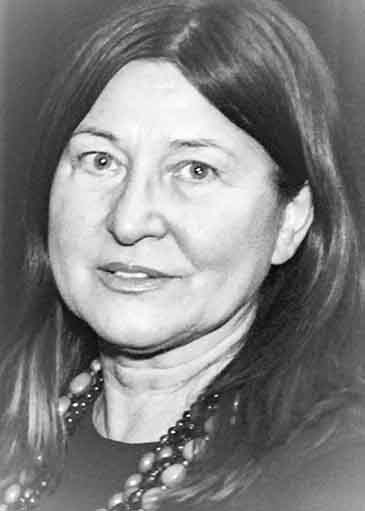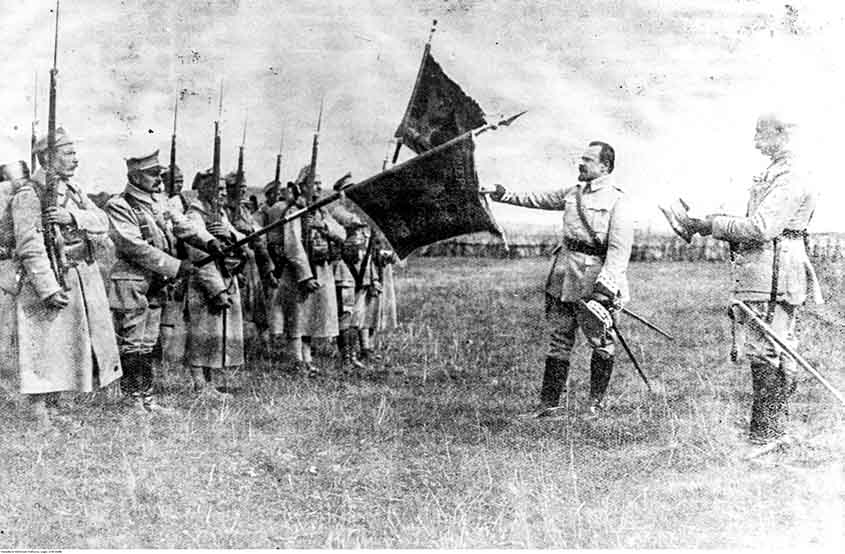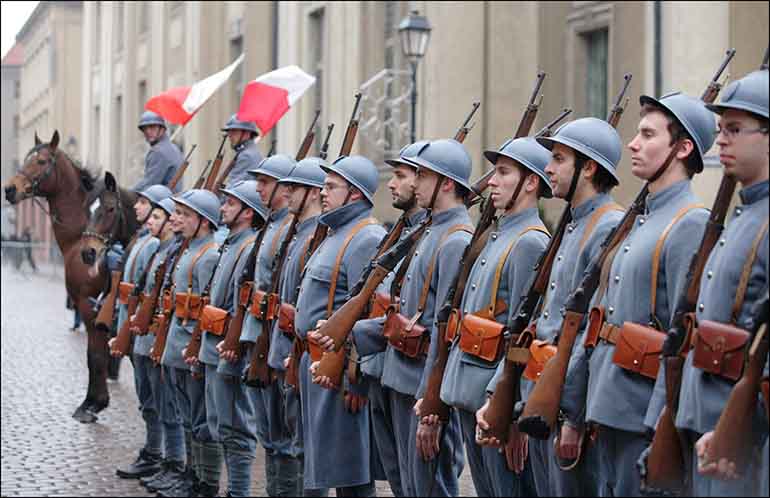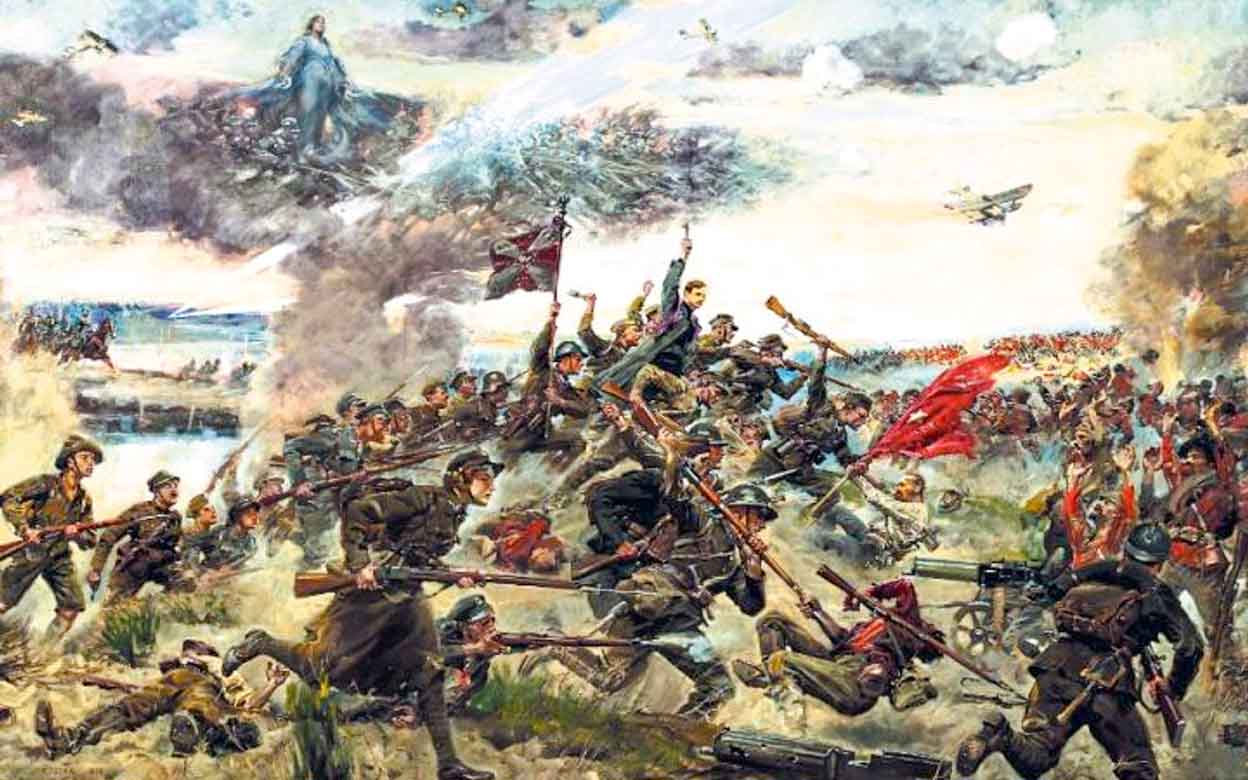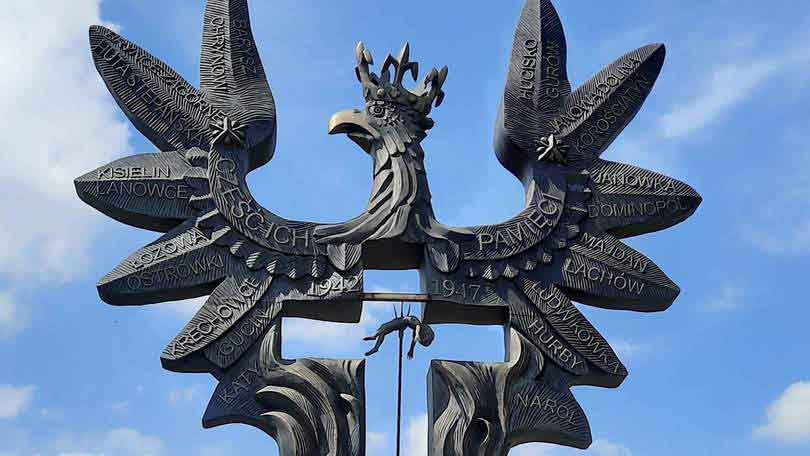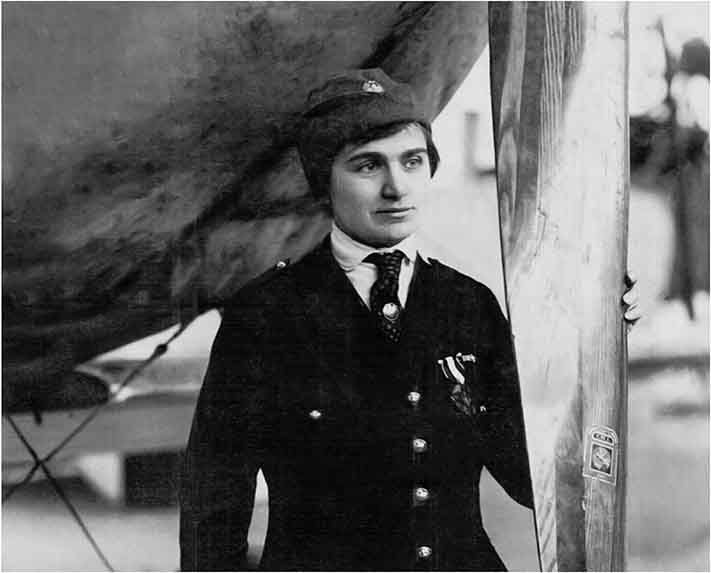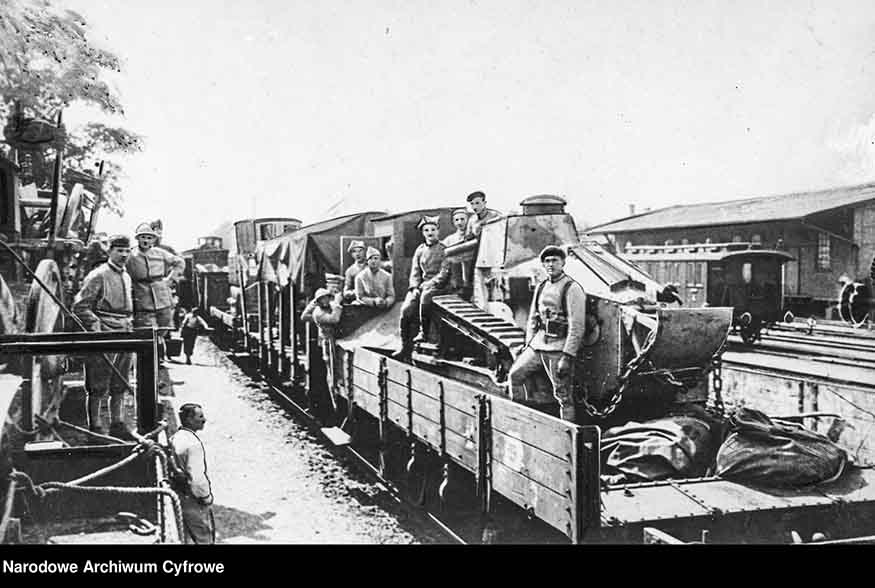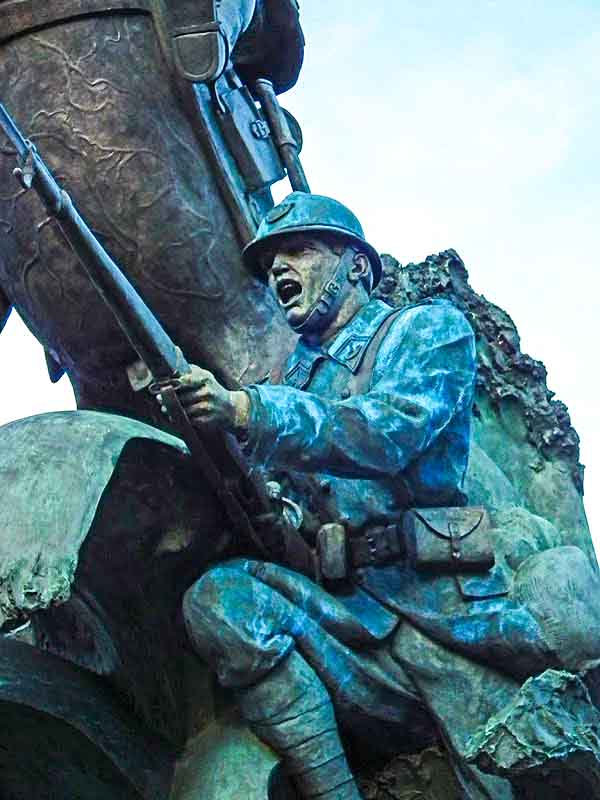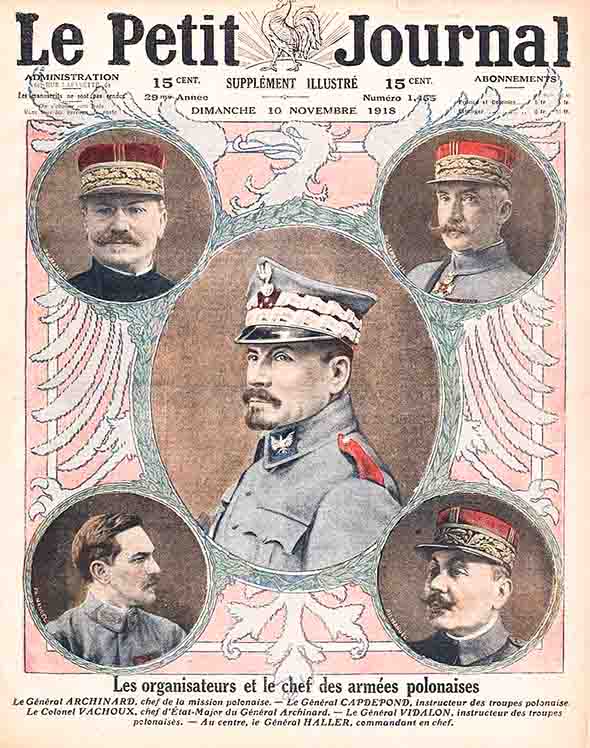May the memory of Polish volunteers from America never fade away! “Weteran”, April 1928
On June 17th, 2023, at 2 PM, a ceremonial dedication of the graves of veterans of the Blue Army will take place at Holy Sepulchre Cemetery in Southfield, Michigan.
In Section No. 5 of the Holy Sepulchre Cemetery, rest the veterans who, as volunteers from the United States, joined the Polish Army in France (the Blue Army) in 1917 and fought for Poland's independence from 1918 to 1919.
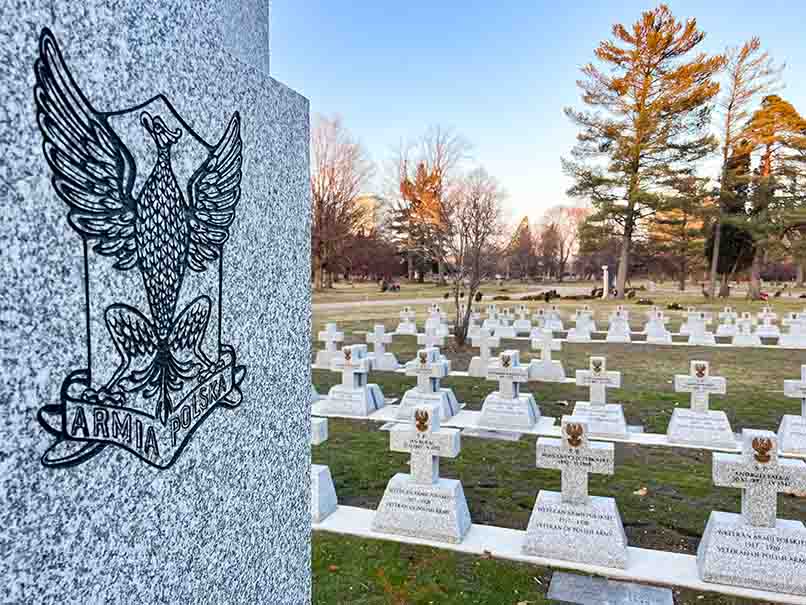
Hallerczycy cemetery in Southfield, Michigan (Source: Tygodnik Polski/The Polish Weekly)
From October 1917 to mid-February 1919, over 38,000 volunteers were registered in the United States. About 22,000 volunteers were qualified for military service. After being sworn in, they were sent to the Kościuszko training camp in Niagara-on-the-Lake, Canada.
Many of them already had basic military training, acquired in the combat teams of the Polish Falcons Alliance in America, initially a sports-gymnastics organization that eventually assumed a paramilitary character.
According to a report by Dr. Teofil Lachowicz, "The Armed Effort of the Polish Emigration in America 1914-1920,” 20,720 volunteers from the United States and Canada served in the Blue Army. Arriving in France in December 1917, they fought alongside American and French forces, repulsing a large German offensive in the summer of 1918.
By the treaty of September 28th, 1918, the Blue Army was recognized by the Entente powers as an independent, allied, and sole cobelligerent Polish army. The Paris-based Polish National Committee, recognized by Western powers as the organ exercising political control over the Polish Army, gained the right to appoint the supreme commander of the Polish Army. General Józef Haller was appointed to this position.
World War I ended in November 1918, but not for Poland, which was still fighting for its independence. The issue of access to the sea was at stake, and the Greater Poland Uprising and Silesian Uprisings broke out. Soon after, the Polish-Bolshevik War began. The young Republic of Poland had to defend its independence. In 1919, the Blue Army, under the command of General Haller, went to Poland, where it fought to defend an independent Poland against its enemies, including the Bolshevik Red Army, which intended to invade Poland and spread communism throughout Europe.
In September 1919, Marshal Józef Piłsudski issued an order to incorporate all emigrant armed forces into the structure of the Polish Army.
General Haller was removed as the commander of the Blue Army in June 1919 and directed to the Polish-German border to take command of the Southwest Front.
The Blue Army was completely disbanded. Individual formations became part of other national military units. Under a different, constantly changing command, soldiers of the Blue Army, colloquially known as Hallerczycy (after the general), felt abandoned and disappointed.
Volunteers from the United States were demobilized, which angered the Polish American community and the volunteers — the soldiers themselves.
The situation of demobilized Blue Army soldiers was very grim. The matter was discussed at the highest levels of the American authorities, and the issue of returning the demobilized volunteers was raised in the House of Representatives at the beginning of 1920.
The House authorized Secretary of War Newton Baker to transport them on American cargo vessels/transports (ships tasked with supplying American troops stationed in the occupied Rhineland).
Apart from recognition and awarding them the Cross of Polish Soldiers from America, the veterans were left to fend for themselves. Many of them were disabled or had lost their health. They began to organize help for their needy colleagues themselves.
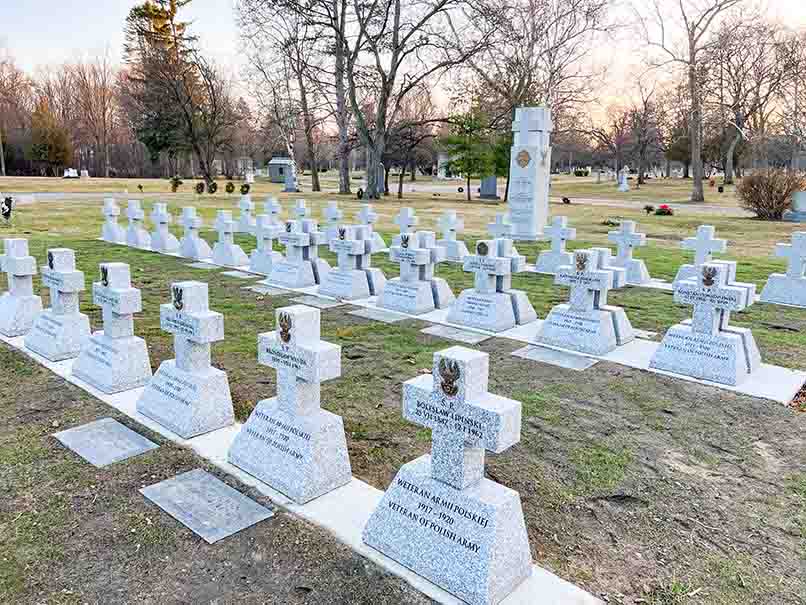
Hallerczycy cemetary in Southfield, Michigan (Source: Tygodnik Polski/The Polish Weekly)
In May 1921, they founded the Polish Army Veterans' Association in America (SWAP). Beginning in 1925, the Ladies Auxiliaries also worked with SWAP in helping to care for veterans, especially the disabled, homeless, and unemployed, who were deprived of means of subsistence.
The Ladies Auxiliary Corps No. 5 purchased 72 gravesites at Holy Sepulchre Cemetery in Southfield, Michigan, to secure a dignified burial place for Polish World War I veterans. The families of many veterans could not afford tombstones, so they remained anonymous.
The matter was revisited 15 years ago by Mrs. Henrietta Nowakowski, daughter of Blue Army soldier Sergeant First Class Ignacy Zapytowski.
Henrietta was raised in a patriotic Polish family. Her mother Aniela worked as a recruiter for the army. Both parents had been involved in veteran groups and had helped Polish soldiers and veterans from both World War I and II for decades.
Searching outsources and finding the name and history of each veteran buried in an unnamed grave at the Holy Sepulchre Cemetery required tremendous research and organizational work. Henrietta meticulously reviewed the Commemorative Books of the Ladies Auxiliary Corps and the records kept by her mother, secretary of Ladies Auxiliary No. 5. She used archival resources and the assistance of archivists from the Polish Museum in Chicago, SWAP archives in New York, the Institute of National Remembrance in Warsaw, the Archdiocese of Detroit and the Polish Genealogical Society of Michigan. After years of searching, the identities of the Hallerczycy resting there were confirmed.
In 2017, Mrs. Nowakowski's project gained the support of the Polish Mission at Orchard Lake. The Institute of National Remembrance in Warsaw also became interested in the topic.
Thanks to the tremendous work and efforts of Mrs. Henrietta Nowakowski and her supporters, the forgotten veterans of General Józef Haller’s Blue Army have been restored to memory.
The original dedication of this area for the veterans’ graves took place in 1929. Almost a hundred years later, thanks to the enormous financial support of the Institute of National Remembrance, the veterans' graves at the Holy Sepulchre Cemetery in Southfield, Michigan, finally received new tombstones. The IPN donation consists of 60 tombstones with crosses.
The Institute of National Remembrance in Warsaw also funded a monument commemorating the heroic deeds of the heroes resting here.
In addition to the World War I veterans buried in Section No. 5, there are several graves of Polish Armed Forces veterans from World War II and two Poles who served in the American armed forces.
On this piece of American land, the graves with a towering monument above them will speak from now on about the sacrifice, bravery, and honor of the veterans of the Blue Army so that future generations — not only Polish immigrants in America — will never forget the heroes who fought for the freedom and independence of their Homeland — Poland.
The article originally appeared in «Tygodnik Polski/The Polish Weekly». Republished with permission.



